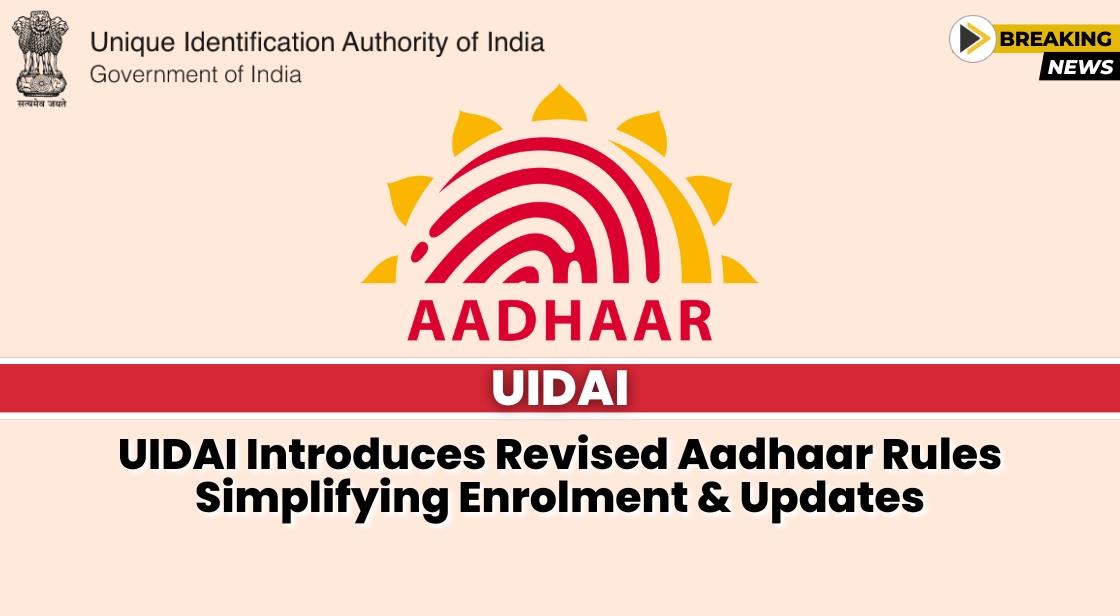UIDAI Introduces Revised Aadhaar Rules: Simplifying Enrolment and Updates

News Synopsis
In a significant development, the Unique Identification Authority of India (UIDAI) has rolled out updates to the Aadhaar (Enrolment and Update) rules, aiming to enhance the accessibility of the enrolment process for both residents and non-residents. These modifications, known as the Aadhaar (Enrolment and Update) Amendment Regulations, 2024, bring about crucial changes in the Aadhaar enrolment and updating procedures.
Enhanced Aadhaar Enrolment and Update Options:
UIDAI, in its notification on January 16, announced that the 12-digit unique Aadhaar number could now be updated both online and offline. The move is designed to provide greater flexibility to applicants, catering to the needs of residents and non-residents alike.
Introduction of New Forms:
To facilitate the updated processes, UIDAI has introduced two new forms—one for resident individuals and another for non-resident individuals (NRIs). These forms are part of the effort to streamline the enrolment and updating of Aadhaar information.
Flexible Information Updates:
One notable change is the flexibility provided to applicants for updating information in the Central Identities Data Repository (CIDR). Previously, only address updates were allowed in online mode. The revised rules now permit the updating of documents or information through various channels, including the enrolment center, website, or mobile application.
Revised Forms for Different Categories:
UIDAI has revamped existing forms to ensure user-friendliness and applicability. The key forms introduced include:
-
Form 1: For Aadhaar enrolment and updates for individuals aged 18 and above, both residents and NRIs, with Indian address proof.
-
Form 2: Specifically designed for NRIs, allowing them to enroll and update details with proof of address outside India.
-
Forms 3 to 6: Tailored for children of different age groups, catering to both residents and NRIs.
Documentary Proof for Age:
To enhance accuracy and authenticity, Unique Identification Authority of India (UIDAI) now requires documentary proof in cases where the age of an individual is declared or approximate. This ensures that the Aadhaar card displays the complete date of birth.
Form-Specific Guidelines:
The revised rules introduce specific guidelines for various forms, including Form 7 for resident foreign nationals, Form 8 for resident foreign nationals under 18, and Form 9 for canceling an Aadhaar number upon turning 18.
Proof for NRIs:
For NRIs, providing an email ID in Aadhaar is mandatory. Notably, if an NRI provides a non-Indian mobile number, no SMS or text message will be sent to that number, as per the guidelines outlined in Form 1.
Additional Updates:
-
Enrollment and Updates through Head of Family (HoF): Enrollment and updates can be done based on document verification or confirmation by the HoF, who would need to provide their Aadhaar details and sign Form 1.
-
Mandatory Email ID for NRIs: NRIs must provide an email ID in Aadhaar. SMS notifications won't be sent to non-Indian mobile numbers.
You May Like









